How to Sell Pet Products Online: Creating a ‘Best in Show’ Ecommerce Store on Shopify Plus
We leverage our extensive experience in the petcare ecommerce sector to bring you this guide to creating a successful pet products website on Shopify Plus. From needs-based navigation and sampling strategies to personalisation and social proof, we share 11 strategies for selling petcare products online.
Written By
Hannah Smiddy
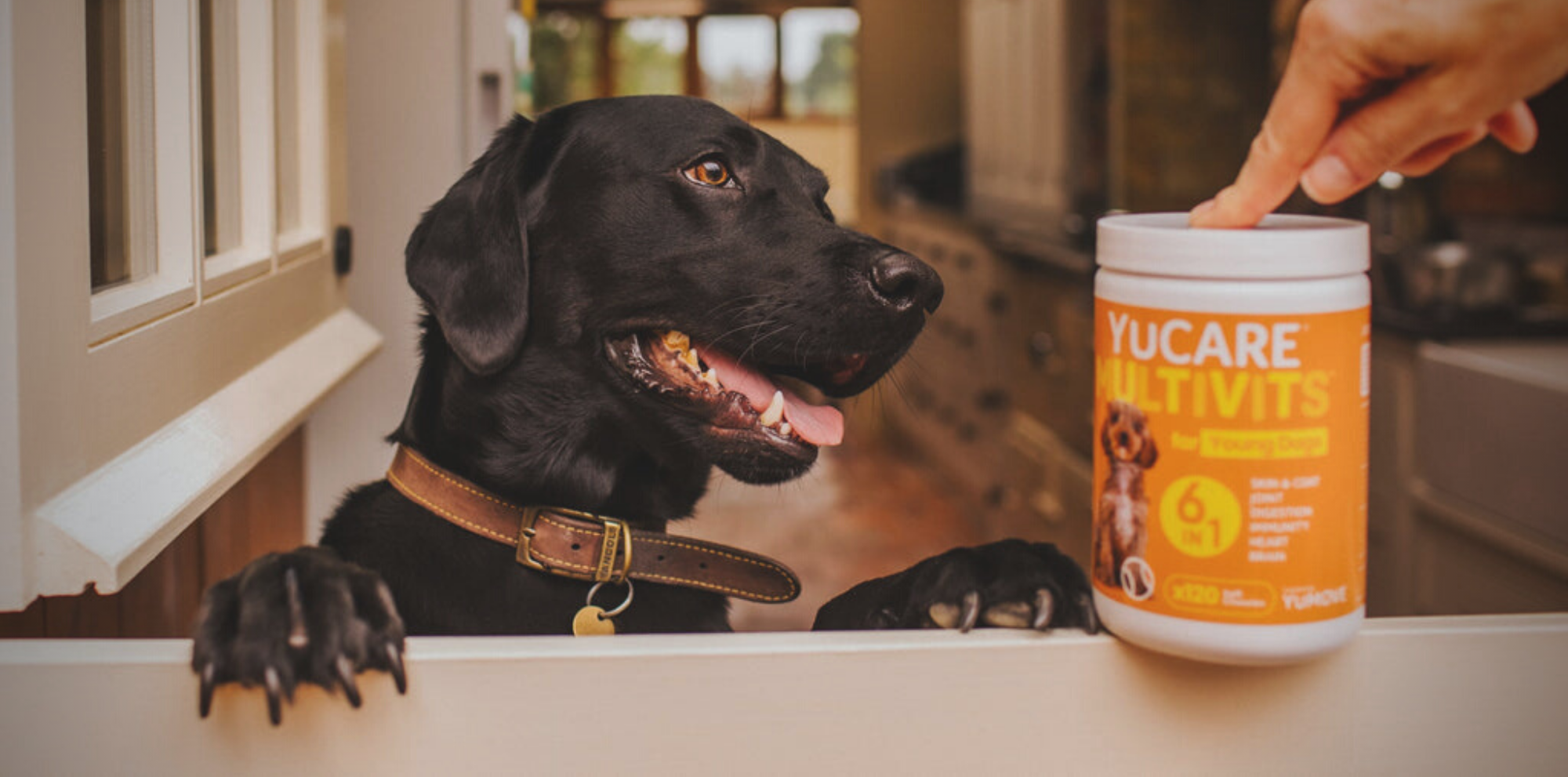
Globally, the petcare market was worth $261 billion in 2022. By 2027, that figure is expected to reach $350 billion.1
For brands that sell pet products online, it can be a dog-eat-dog world. The petcare ecommerce market in particular has nearly quadrupled since 2013, making it a competitive space for DTC brands to succeed in.
Our unique experience building and optimising pet ecommerce solutions for leading petcare companies such as YuMOVE, Catit and Forthglade has given us a deep understanding of what it takes to accelerate digital growth in such a crowded marketplace.
We’re now recognised globally as the go-to Shopify Plus agency for DTC petcare brands, whether you’re looking for web design and development, internationalisation consultancy, subscription strategy or growth services.
In this article, we share some of the best practices we’ve learned throughout our extensive work with petcare brands and animal charities, with particular reference to the experimentation program we’ve been running with YuMOVE over many years.
We’ll explore the strategies you can use to become leader of the pack with your petcare ecommerce website, with insights direct from Swanky’s Head of Digital Strategy, Sammy Fraser.
11 strategies for a successful pet products website
1. Seamlessly connect shoppers with relevant products
If you sell a vast range of pet products, or if you have a number of items that are all very similar, it could be overwhelming for online shoppers when they first land on your ecommerce store.
Sammy Fraser, Head of Digital Strategy at Swanky, explains how you can combat this:
“You want to create efficient user journeys that enable shoppers to find the most relevant product for their pet’s needs quickly and easily. This is especially important if you have a large number of SKUs or products that are difficult to differentiate with an initial glance.
“Streamlining product discovery and connecting users with the most relevant items on your website is important for improving not only the customer experience, but also conversion rates.”
There are several ways you can implement these recommendations on your petcare website:
Needs-based navigation
For high-intent shoppers with a particular product in mind, needs-based navigation can provide an efficient route to purchase.
A common implementation of this is to feature clickable icons on your homepage, each representing a goal or category. Or you might have these different aspects represented in a drop-down list in your main navigation menu.
If you sell pet health products, you might have icons or list items for digestion, joints and dental, for instance. Or, if you offer a wide range of cat supplies like Swanky client Catit, you might have clickable elements for travel, play and furniture, like so:
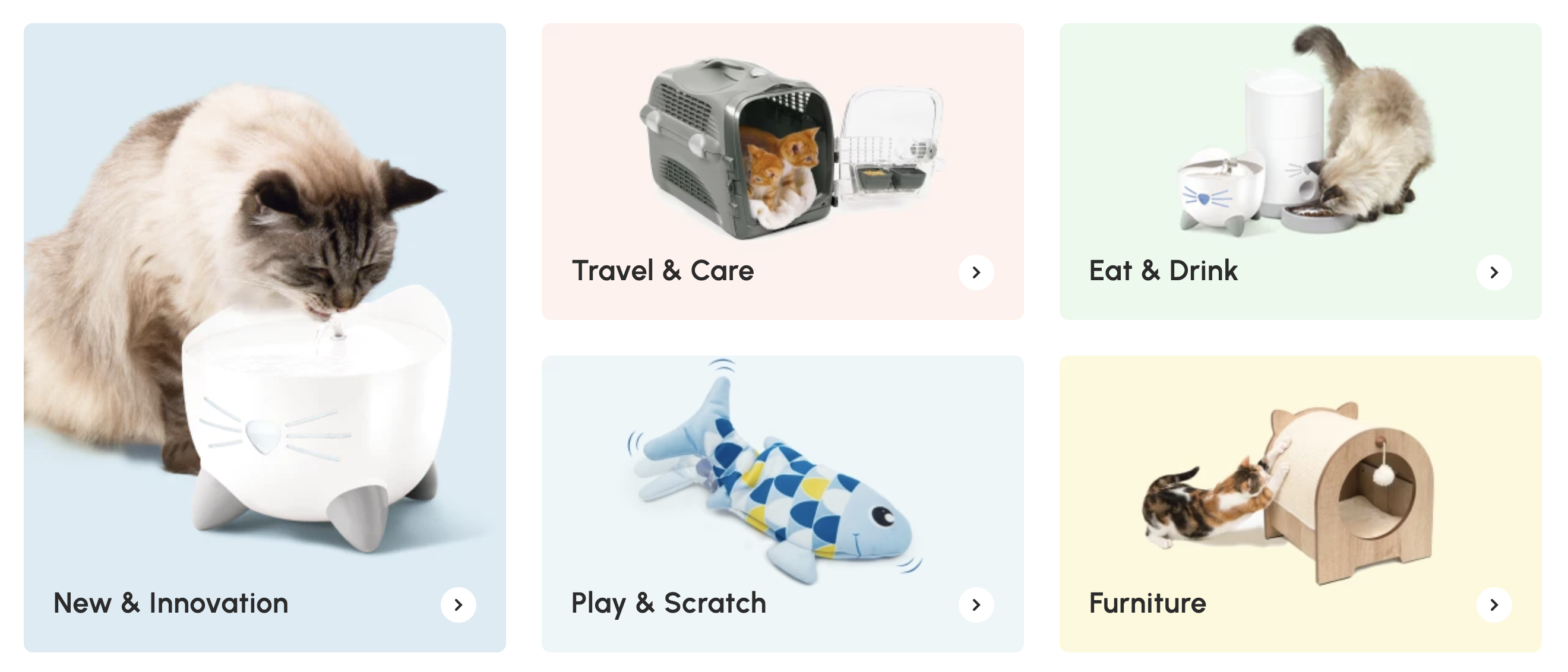
Needs-based filters
A similar needs-based approach can also be applied to any collection page filtering. This makes it easier for high-intent shoppers to whittle down your product offering and only consider the most relevant items.
Product quizzes
By asking questions about a user’s pet and assessing their needs, you can build a detailed picture of the pet in question and determine the most suitable product for them.
Not only does this connect shoppers with relevant products, but a quiz is a great way to capture zero-party data which can later be used to provide a personalised and more meaningful ecommerce experience. We talk a bit more about personalisation and quizzes later on in this article.
Adding prompts to product tiles
This particular tactic is one that we implemented on YuMOVE’s Shopify Plus store. After identifying that users were exiting the site on collection pages due to issues with choice overload and lack of product differentiation, we added prompts at the top of the product tiles to promote the benefit and intended use of products (you can see an example below).
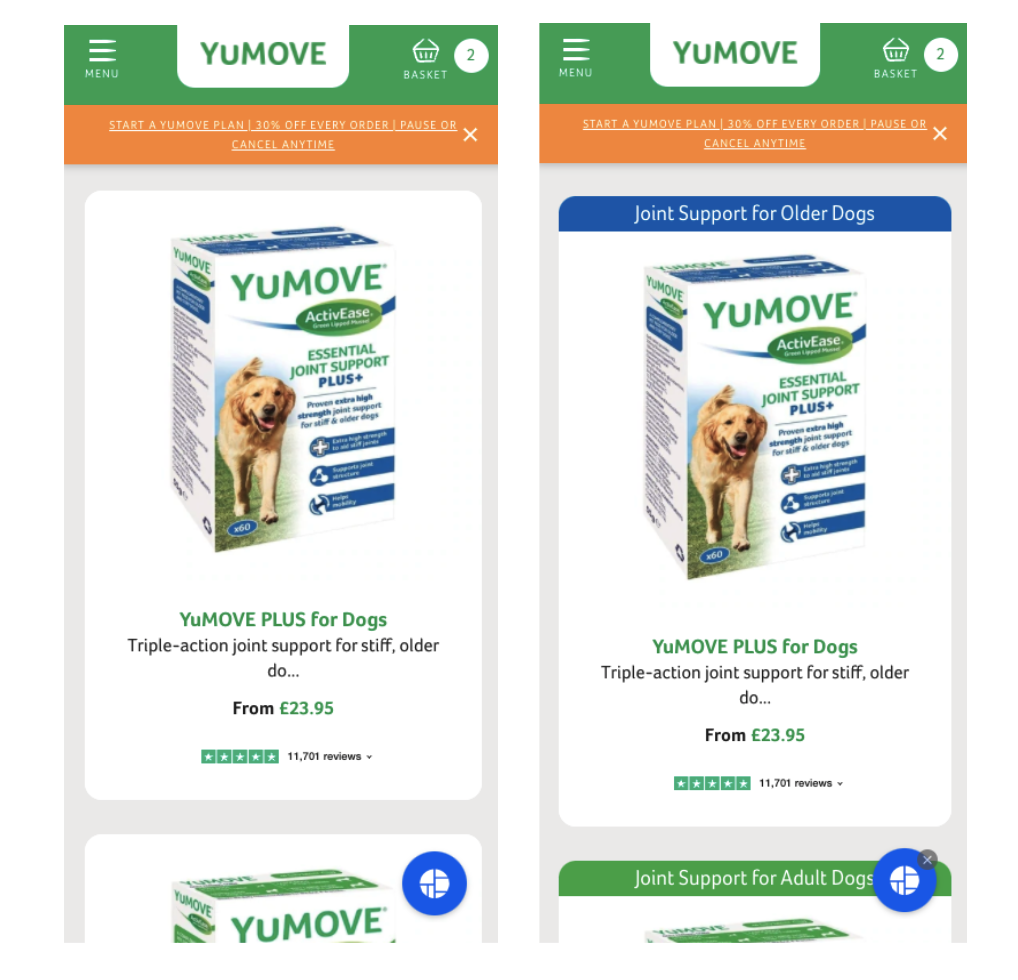
This simple change resulted in a 4.68% increase in conversion rate.
Highlight products with seasonality in mind
For some pet products, owners will be browsing at particular times of the year (like dog owners looking for anti-anxiety products in the lead up to Bonfire Night, for example). If these seasonal patterns of purchasing apply to your products, it’s important to plan your promotions accordingly so that users can find these items as easily as possible.
You can streamline product discovery using things like homepage banners, product tile prompts and landing page imagery.
2. Craft comprehensive product pages
Pet owners are looking to make informed purchasing decisions when shopping for their furry friends. A lack of detail about your products could frustrate shoppers and reduce the likelihood of them following through with a purchase.
With this in mind, it’s important to create informative product pages that anticipate any pre-purchase questions that consumers might have. Leverage written and visual content that gives users clarity on what your product is, how it works, the benefits it can bring your pets, and why it’s better than alternatives on the market.
Here are some specific tips to keep in mind:
- Include all essential details relevant to the type of product you’re selling. If you’re a brand selling pet food, supplements or similar, ensure that ingredients, nutritional information, allergy concerns and feeding guides are included. For pet furniture retailers, this means including things like product dimensions and cleaning instructions.
- Provide functionality on your product pages for users to work out exactly how much of a product they should order, based on their pet’s specific requirements. We implemented something similar on YuMOVE’s store, with shoppers able to enter weight and pack size to get a recommended product quantity. Over the course of the test (which was run using experience optimisation platform Dynamic Yield), one time purchase conversion rate increased by 4% and subscription conversion rate increased by 5%. This resulted in an uplift in revenue per user and was predicted to translate into a significant seven-figure increase in additional revenue if rolled out to 100% of traffic.
- Use icons and diagrams to communicate the benefits of your product/s with more impact. YuMOVE do this above the fold on their product pages, as you can see in this website snapshot.
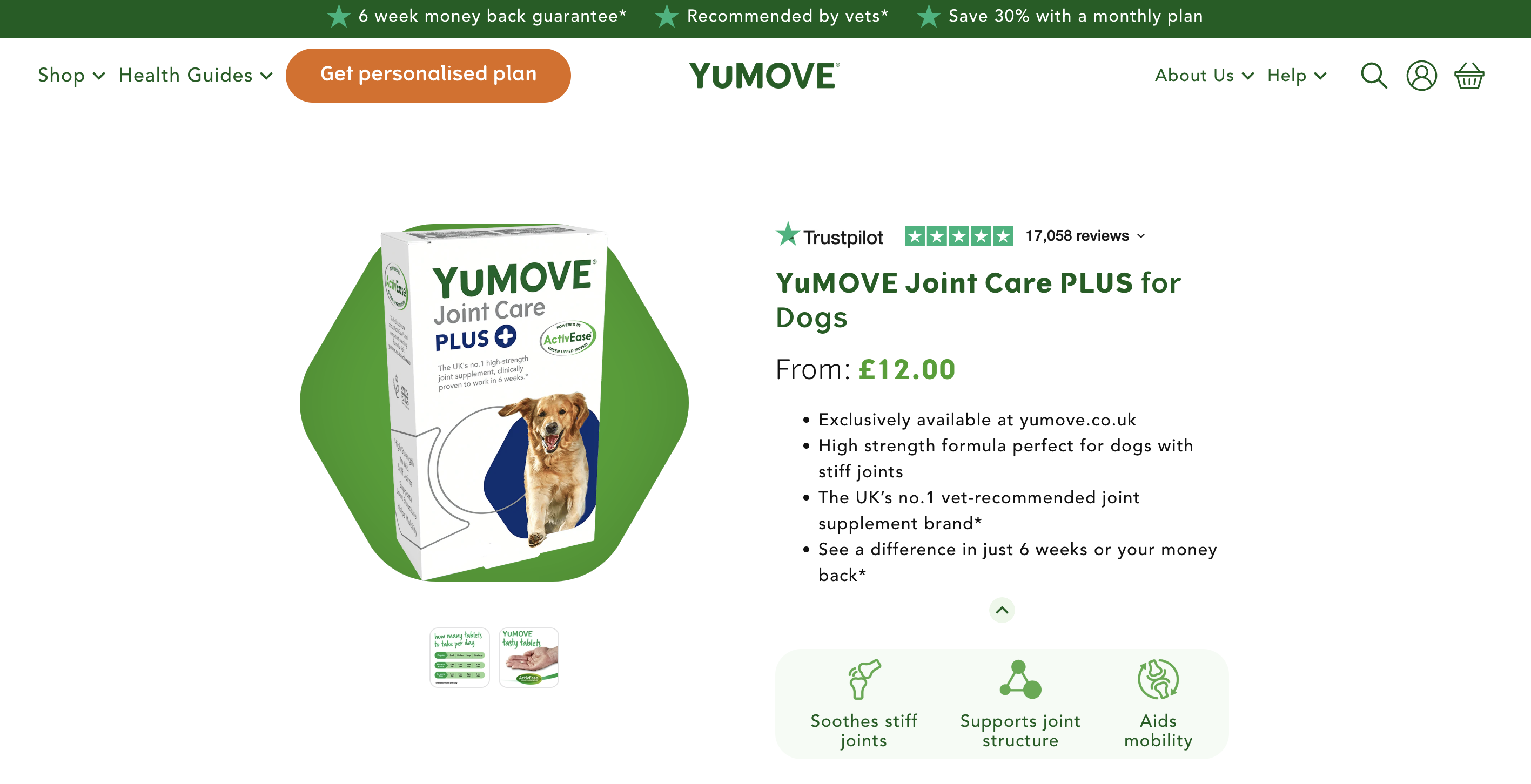
- Remember to acknowledge any awards or certifications that your products have received. These can act as a great differentiator when consumers are choosing which brand to buy from.
- Make use of high quality product and lifestyle photography to communicate brand credibility and create a more memorable on-site experience.
- Leverage video to show your products in use. This can be an effective tactic to increase time on page and immerse visitors in the ‘why’ of your products.
- Anticipate users’ questions and provide helpful answers in an FAQ section.
3. Leverage trust signals
Naturally very protective of their pets, owners are committed to buying them the best quality products from trustworthy brands.
In order to demonstrate your credibility to consumers (and drive conversions), there are plenty of trust signals you can leverage across your petcare ecommerce store.
Relevant third-party endorsements
By aligning your petcare brand with established, reputable organisations, you can quickly communicate credibility to potential customers. Display logos of said organisations in prominent positions throughout the user journey for maximum impact.
US pet brand PrettyLitter does exactly this, with logos of organisations like Forbes and Nat Geo Wild above the fold on its homepage.

If your product is recommended by vets, then ensure this is communicated above the fold on key pages.
Security badges
This is a simple but effective way to build trust with shoppers. A secure checkout badge reassures users that their payment details are safe with one glance.
Details of charity partnerships
Authentic and relevant partnerships with pet and animal charities not only help to communicate your core values, they help to build emotional connections with shoppers and instil confidence in your brand.
You can also integrate social responsibility initiatives into your customer retention strategy.
Forthglade’s ‘Happy Paws’ initiative sees the brand support at least five charities every month with things like food donations, volunteer days and raffle prizes. Communicating how many dog dinners they’ve donated through their partnerships is a great way to demonstrate their credibility as a company, as well as convey their love of dogs.
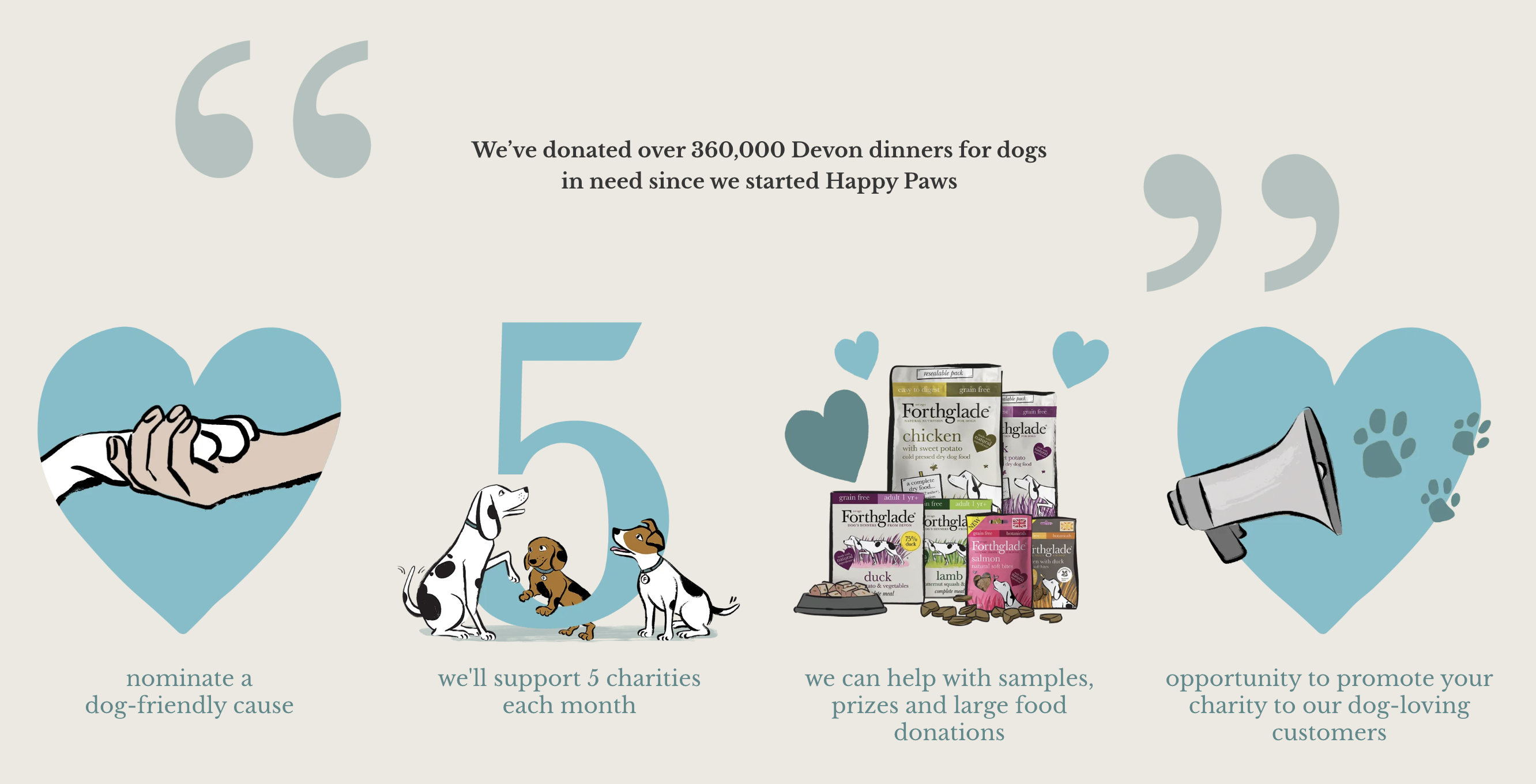
References to local production
In a similar vein, highlighting details of local production, ingredients and factories can help to build trust with your audience.
Money back guarantees
For cautious consumers, the promise of their money back if they’re not satisfied with a product can eliminate risk, increase trust and reduce the barriers to conversion.
YuMOVE offers a ‘See the Difference Guarantee’, which means if customers don’t see a difference in their dog or cat in a set time period, they’ll get their money back. When we tested the promotion of this guarantee across product pages, we saw a 13% increase in conversion rate of one time purchases and a 28% increase in conversion rate of subscriptions. These results speak to the power of money back guarantees in encouraging purchases.
Sales counters
Social proof such as sales counters can be particularly useful in boosting trust. By communicating to shoppers how many other people have purchased a product over a recent time frame, you can communicate credibility, increase confidence and boost conversions.
Tests we have run within our CRO team indicate that this is particularly important for new customers who are unfamiliar with your brand or products.
“In an A/B test that we ran for YuMOVE, we found that new users were more likely to be positively impacted by the addition of a sales counter than returning users, with particular purchase uplifts for users coming from paid search and social media.
“We hypothesised that users being acquired at the top of the funnel like this were less likely to be familiar with YuMOVE, making social proof much more powerful once they landed on the site.”
4. Personalise the customer experience
The ROI of ecommerce personalisation is something we’ve previously explored on the Swanky blog. When executed effectively, personalisation can boost engagement, satisfaction and loyalty, which can each translate into significant commercial benefits.
At the heart of ecommerce personalisation is data. By learning about your customers and their pets, you can create a targeted experience that will make them feel connected and valued. This will also allow them to make a more informed purchasing decision.
What type of pet do they have? When is their pet’s birthday? Does their pet have any health issues? Depending on the types of pet products you sell online, these are just a few of the questions you might want to find answers to as you look to build a detailed picture of your customers.
One way of capturing answers to these questions is by implementing a quiz at the beginning of the customer journey. You can then leverage the zero-party data you capture within the quiz to:
- provide relevant and personalised product recommendations;
- tailor subscription plans based on pets’ individual needs;
- surprise a customer with treats on their pet’s birthday;
- connect customers with relevant content on your blog (such as guides or articles they might find particularly pertinent); and
- personalise their brand experience at various touchpoints (e.g. referring to their pet by name on your website, in emails and on packaging materials).
Visitors to the YuMOVE website are encouraged to answer a few simple questions to get recommendations for the best products for their dogs. The quiz collects information on the pooch’s name, birthday, breed, weight, activity level and joint stiffness, as well as contact details for the customer themselves. This final bit is important for maintaining meaningful conversations with shoppers and building long-term customer relationships.
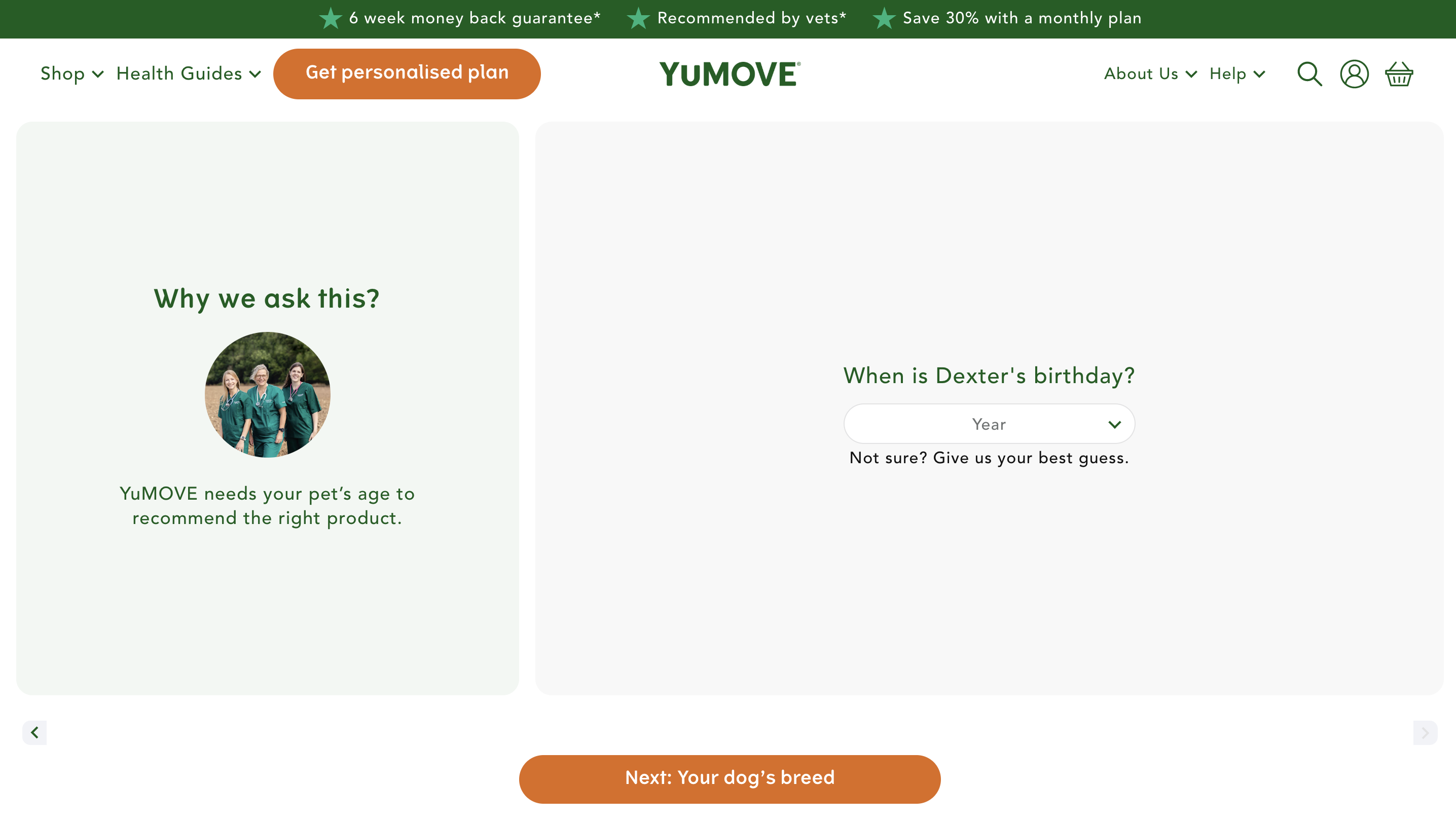
5. Offer discounted samples as a gateway to subscriptions
If you offer a subscription service for your petcare products, have you considered providing a free or discounted sample option for new customers to trial before they commit to a recurring delivery?
“A seemingly small act like this can massively boost confidence amongst shoppers who are new to your brand. It can also have a positive impact on your subscription conversion rate.”
We recently demonstrated the benefits of a sampling strategy for YuMOVE, in which users receive their first two months’ worth of supplements at a significantly reduced cost before joining a full price subscription.
To counter any potential abuse of the sampling offer, we developed a custom app so that only first time customers could get access to the trial. We complemented this with configuration of Shopify Flow rules.
Within the first three months of this being implemented, it accounted for over a quarter of all subscription orders and led to a 4.86% increase in subscriptions.
You could also use sampling as a way to promote new products on your petcare store.
“In order to raise awareness of YuMOVE’s new MultiVits range, we tested promoting samples of these whilst users were returning to the site to purchase their usual product. For example, if a user had a joint product in their cart, they would be shown details of the corresponding multivitamin product sample in the ajax cart upsell.
“This resulted in an increase in conversion rate for both one time purchases and subscriptions for returning users, once again highlighting the power of a sampling strategy.”
6. Clearly illustrate the value of any subscription offerings
Sticking with the theme of subscriptions, if you provide a ‘subscribe and save’ replenishment service or a monthly curated subscription box, illustrating the value of your subscription plan at key touch points in the customer journey is essential. It’s important to clearly showcase the benefits that subscribers can enjoy if they sign up.
Catit’s US Shopify Plus store serves as a good example of this in action. The benefits of the brand’s Recharge-powered subscribe and save offering – including convenient doorstep delivery, discounts and free shopping – are clearly and succinctly demonstrated on their subscription landing page.
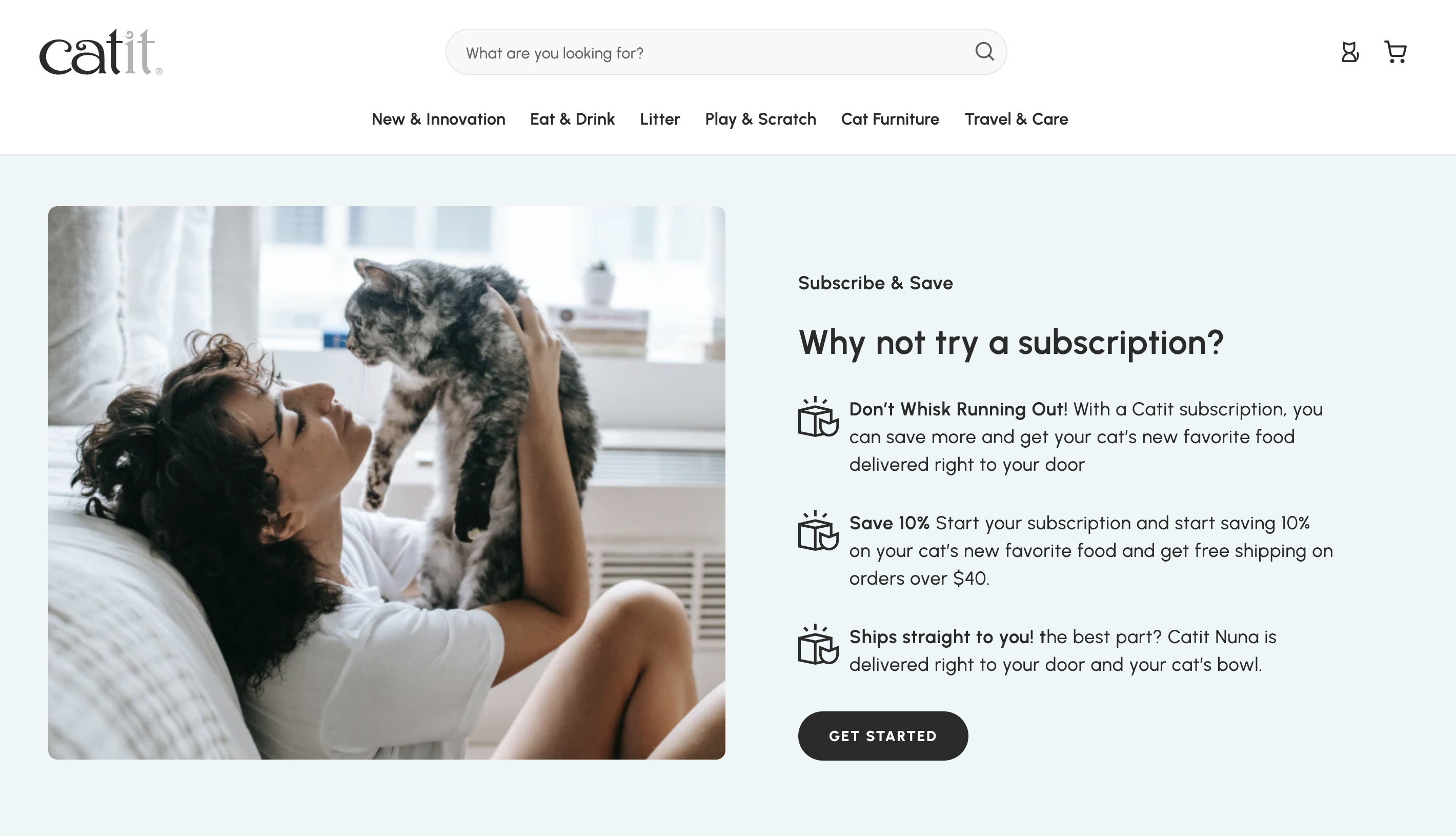
As well as listing the benefits for subscribers, another way you can demonstrate value is by clearly explaining the contents of each subscription box, like BarkBox have in the example below.
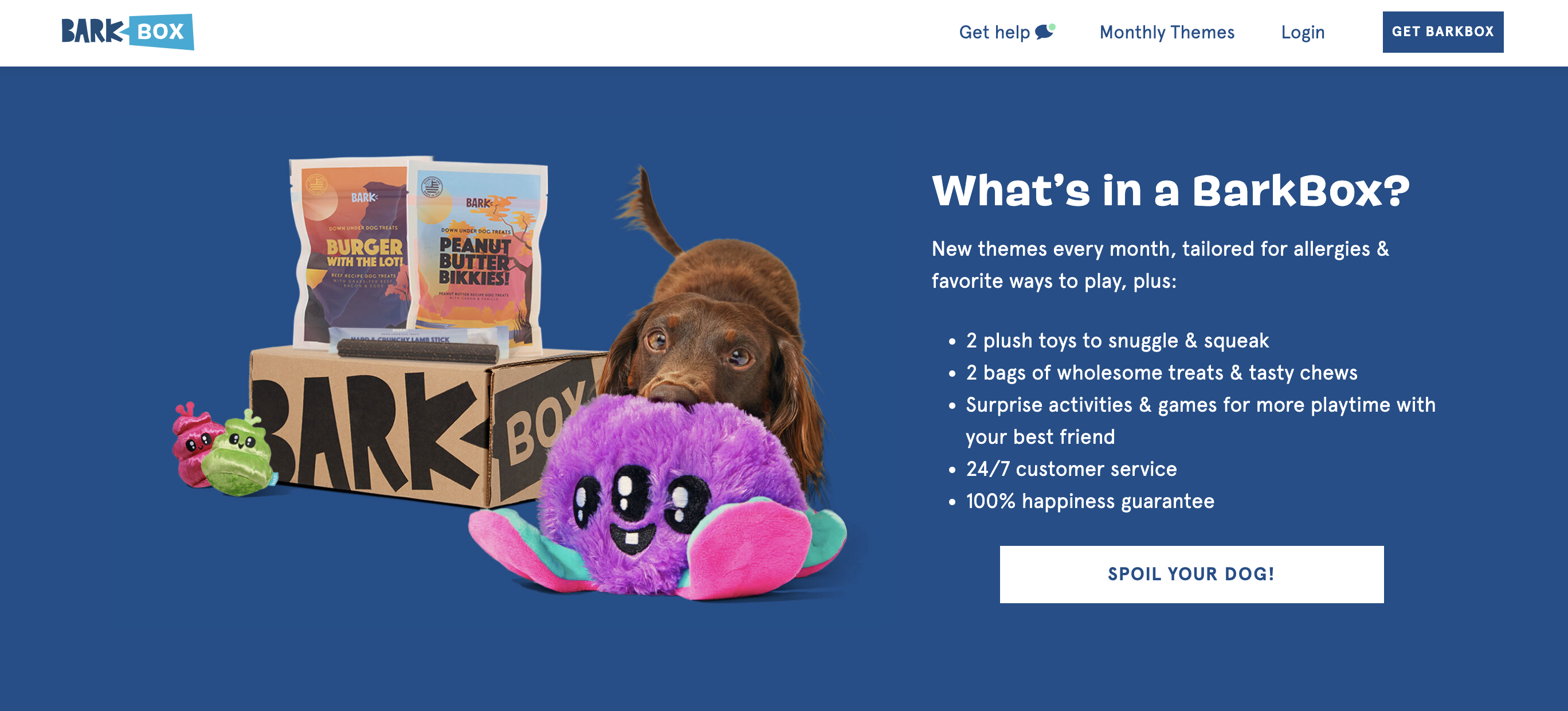
The popular dog toy subscription brand has teamed simple bullet points with colourful imagery and a tempting call to action to encourage shoppers to commit to a monthly BarkBox.
7. Leverage the power of customer reviews
For pet owners who may be browsing your store for the first time and looking for validation from their peers, authentic customer reviews can help to confirm the credibility of your brand and its offering. Shoppers want to hear from real people about how their pets have benefitted from your products.
Be sure to display reviews at various touch points across your petcare website, including the homepage, landing pages and product pages. Swanky typically recommends solutions such as Yotpo and Okendo for collecting and showcasing customer reviews.
For maximum impact, leverage reviews with visual elements. This type of social proof can be particularly effective for petcare brands, as photos of happy pets can trigger positive emotional responses and influence our purchase decisions.
Take BarkBox for example, which pairs these fun user photos with customer testimonials to really make an impact.
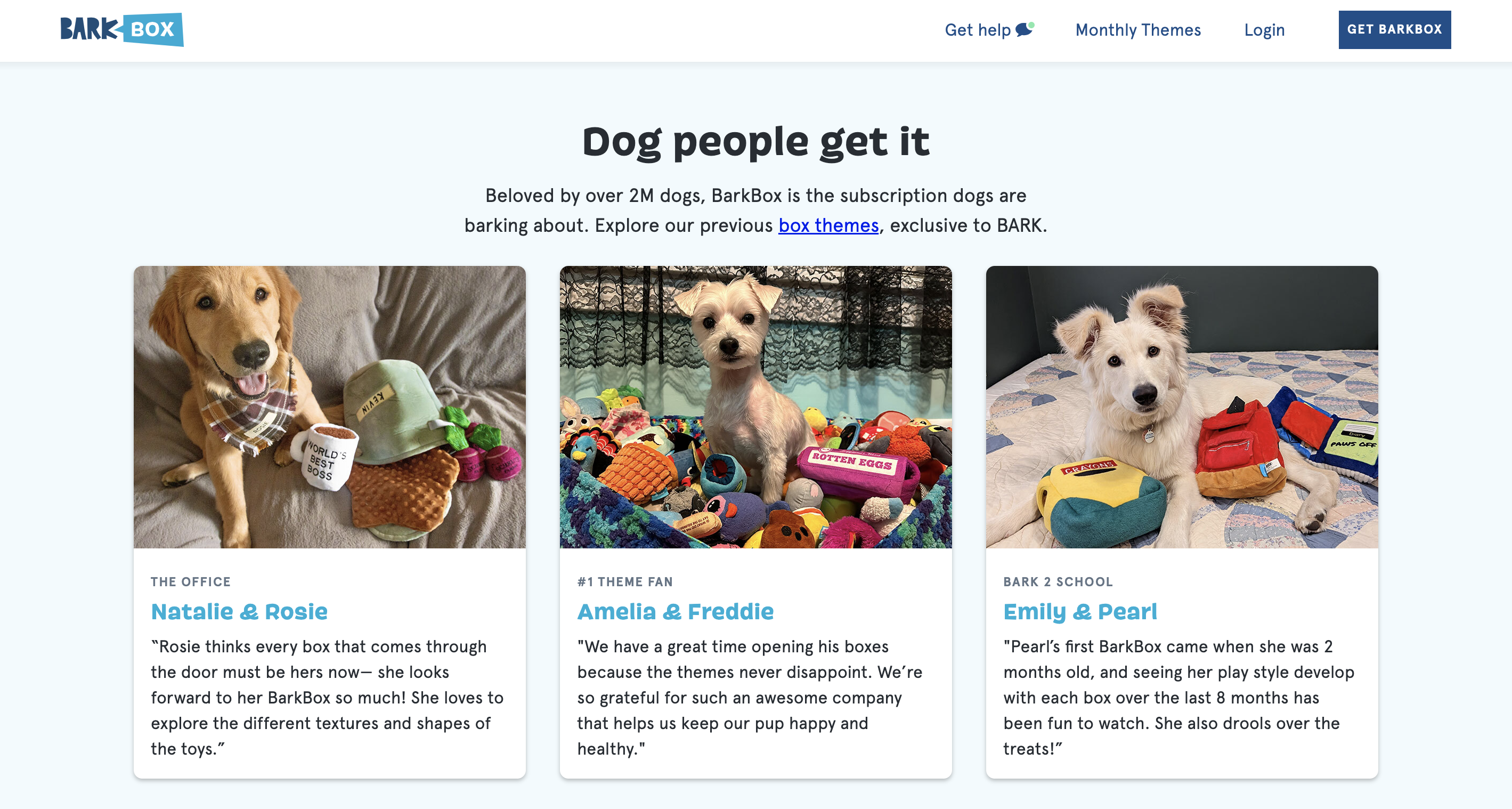
We take a deep dive into the power of reviews in ecommerce in this round up of social proof examples.
8. Use content to educate and inform your customers
They say you can’t teach old dogs new tricks, but there’s plenty of pet-related topics you can educate your customers about on your ecommerce store’s blog. Aim to provide valuable learning opportunities with a carefully curated library of articles.
The benefits of content marketing are vast. This strategy can be used to help attract new leads (through keyword optimisation), as well as nurture connections with existing customers (by providing value beyond your products). It’s a great way to accelerate the sales cycle and convince consumers that your product is something their pet needs.
Take Forthglade for example, who, with the guidance of Swanky’s SEO & content marketing team, has created a useful collection of articles to educate, inform and inspire customers. The articles span a range of topics, from health and diet to grooming and training.

9. Provide premium customer support
When it comes to customer support, you don’t want to be left with your tail between your legs. Pet owners are looking for superior customer service to match the high quality of products they’re seeking for their pets.
Here are a few tools and tactics to consider if you’re aiming to double down on your customer service offering:
- Provide a comprehensive FAQ section. Help customers help themselves with a detailed and easily-accessible FAQs page, where questions are sorted by topic (e.g. shipping, returns, gift cards, subscriptions). Many shoppers can be hesitant to contact customer support with a question, so featuring answers to commonly asked questions is a great way to quell users’ concerns and avoid potential customers exiting your site empty handed.
- Leverage a chatbot to provide round-the-clock support. Automating your customer service with a live chat tool (such as Swanky favourite, Gorgias) means that customers can get fast and accurate answers to their questions 24/7. In our round up of the best Shopify pet stores, we highlighted Australian pet food and supplies business PETstock for its use of a chatbot to provide customers with urgent support.
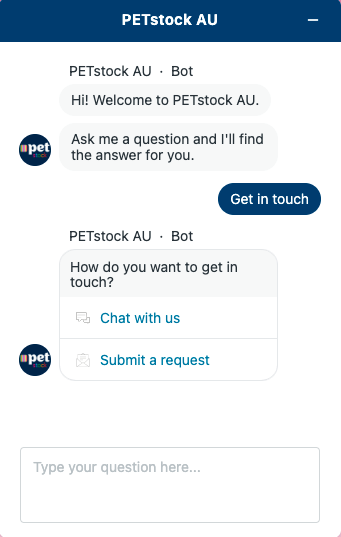
- Make it easy for subscribers to update personal and order details. If you sell your pet products on a subscription basis, you’ll need to consider what type of support your subscribers might need. For example, it’s important to ensure that they can edit things like their address and payment information quickly and easily via your customer support channel.
10. Implement a loyalty program
A loyalty program could serve as a compelling differentiator in what is an increasingly competitive market. Offering value through a rewards scheme is a great way to set you apart from other brands in the petcare space, aiding both acquisition and retention.
There are a number of other benefits to consider, too. For example, a points-per-purchase scheme that rewards shoppers for each order is an effective strategy for encouraging repeat purchases and nurturing long-term customer relationships. Shoppers are less inclined to shop elsewhere when they know they’re amassing loyalty points which can be later transformed into a reward of some kind.
You can also offer loyalty points for actions like leaving a review, referring a friend, following your brand on social media or signing up to your newsletter. This is a great way to incentivise engagement with your petcare website. Plus, it encourages shopper advocacy and leverages your existing customer base as an acquisition channel.
For pet ecommerce loyalty program inspiration, take a look at the Shopify store of Pooch & Mutt. The brand’s ‘Pooch Rewards’ scheme (powered by LoyaltyLion) is clearly signposted across the site, including in the main navigation menu and with a sticky widget. Meanwhile, the program landing page leverages simple iconography to convey key details about the scheme, how it works and its benefits, as well as a comprehensive FAQs section. In terms of rewards, Pooch & Mutt offers program members the choice of monetary vouchers, free gifts for their canine companions, or donations to a pets charity.
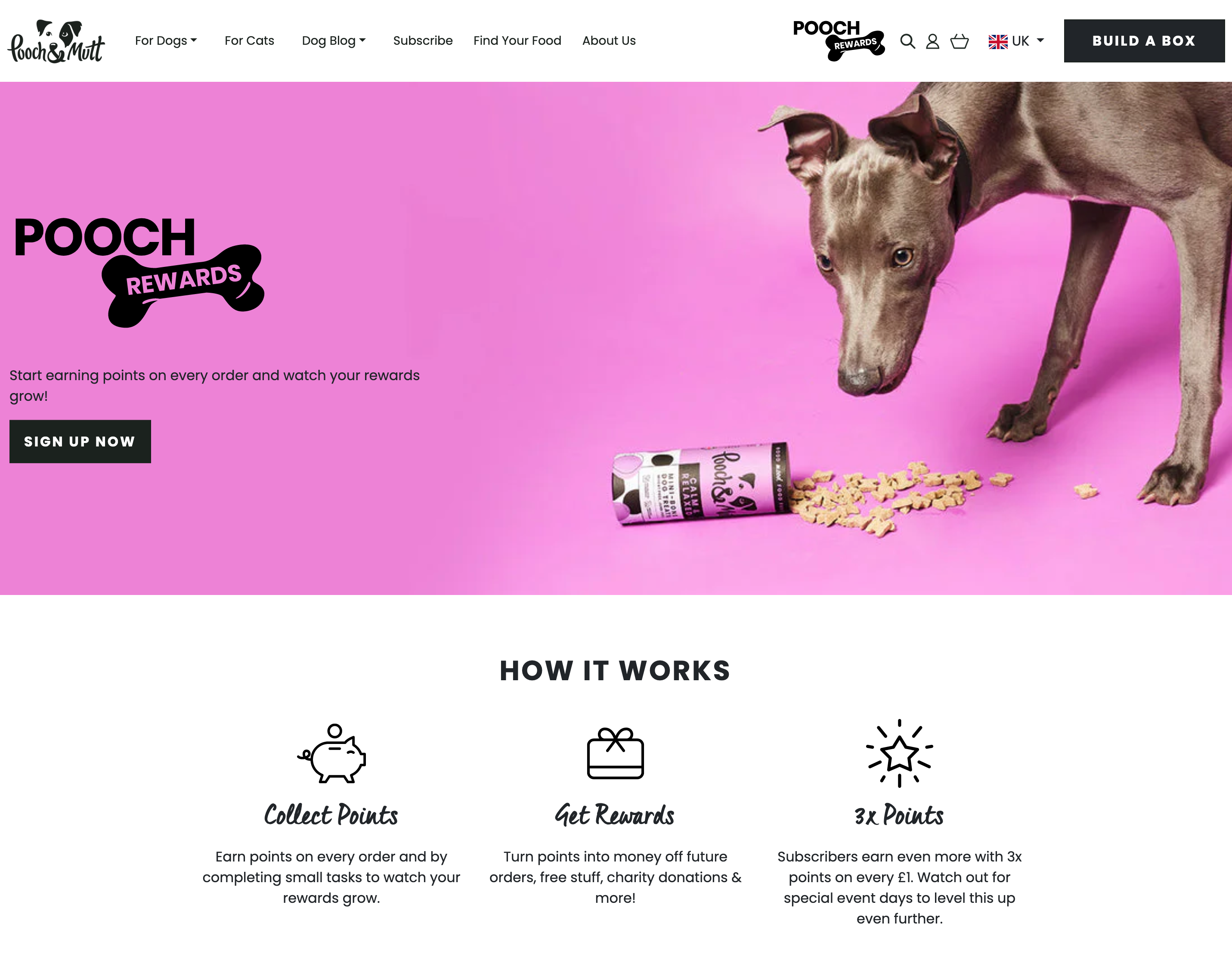
11. Keep experimenting
In such a crowded marketplace, it’s important to maintain an iterative approach to your pet products website, embracing an ongoing process of experimentation, analysis and learning. With data guiding the way, you can enhance your pet products website to deliver the optimal customer experience – one that boosts key metrics like average order value, purchase conversions and subscription sign ups.
You can see an example of how a data-driven conversion rate optimisation strategy can accelerate your digital growth in this case study about our client YuMOVE.
Improve how you sell your pet products online with Swanky
Having worked with the likes of leading petcare brands such as YuMOVE, Catit and Forthglade, as well as animal charities including Battersea Dogs & Cats Home and Animal Aid, we’re recognised globally as the go-to Shopify Plus agency in the pet industry.
Thanks to our significant experience in the sector, we’re experts in pet website design, development and optimisation on Shopify Plus. As a full-service agency, we provide our petcare clients with end-to-end ecommerce support, from branding and bespoke app development to subscription solutions and SEO support.
If you want your pet brand to lead the pack with its ecommerce offering, get in touch with our friendly team of certified Shopify Plus Experts today.
For reference:
[1] https://commonthreadco.com/blogs/coachs-corner/pet-industry-trends-growth-ecommerce-marketing

